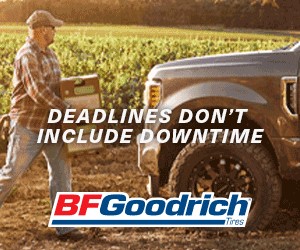A DAY IN THE LIFE
For this farrier, team work makes horse owners' dreams work.
Story by Danvers Child
Photos by April Raine
After several days on the road, shoeing eventers at the Land Rover Three-Day Event in Lexington, Kentucky, and working my way back through Indiana, I spent yesterday shoeing dressage horses in Chicago, then drove north of Milwaukee, where I found a nice room and a horrid breakfast at the Baymont Inn in Mequon, Wisconsin.
I enjoy traveling and working on the road, but the fact is that no matter what you do for a living, there has to be a motivational, driving element – something that makes you actually want to get out of bed and get moving.

It’s a team effort to keep this group of performance horses functioning at top level. My goal as a farrier, and our goal as a team, is to help each horse perform to his or her best.
For me, as a farrier, that motivation boils down to using my knowledge and experience to enhance a horse’s performance and to increase his longevity. I’m just not interested in doing “production line” work, focusing on therapeutic cases, or other niche areas of horseshoeing. Instead, I want to take a horse that has been placing low and find a way to help him score higher or take a horse that has been running weak times and find a way to improve those times. It’s all about finding that little tick and tuning it.
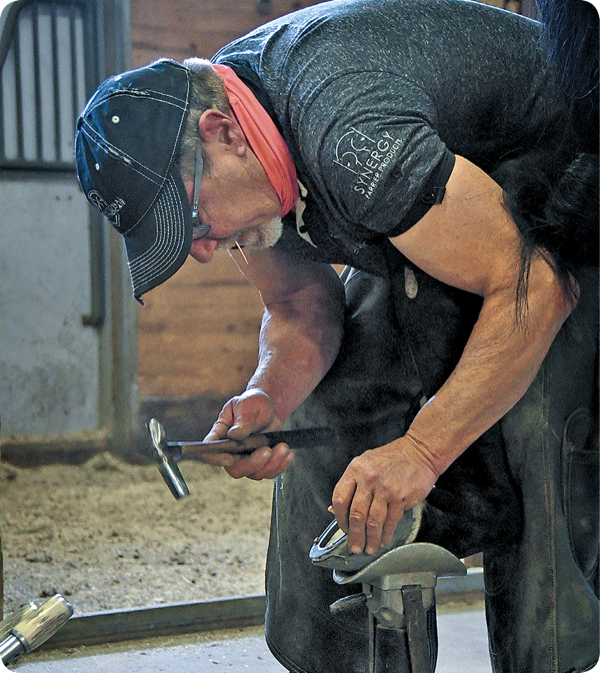
Farriers often work alone, but I’ve realized that pulling together a team of talented professionals just helps the horse more.
But I’m not so much an egotist that I believe I can do this alone. Shoeing for performance is problem solving, and having a team to provide data and insight makes the problems easier to resolve. In effect, I believe it takes a group effort to build a solid competitor, and the day ahead of me represents how that works. It’s not just a day in the life of a farrier; it’s a day in the life of a farrier who enjoys working as part of a team.
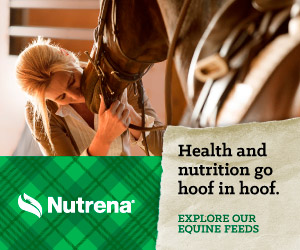
Today’s work is at veteran trainer Jim Ranthum’s barn in Richfield, Wisconsin, where I do a small group of western performance horses every five weeks. Todd Gaskell, an excellent and respected farrier who lives nearby, works as the head farrier in the barn. Becky Tenges, an instructor in the Masterson Massage program and one of my go-to gurus for “whole horse” knowledge, does regular body work on a group of horses there, and Dr. Lisa Borzynski, a veterinarian with Wisconsin Equine, serves as the primary veterinarian.

Becky Tenges is an equine body worker who is an important part of the “whole horse” team.
And today, it’s a true group effort. It’s the end of the winter cycle, and we’re tossing the Wisconsin snow packages (snow pads and traction pins) and making certain that everyone is ready for the welcomed spring shows, so the whole team is there: trainer, farrier, body worker, veterinarian and owners.
Early in my career, if I worked with another equine professional, it was because there was a problem; now, I routinely work with other equine professionals staying ahead of the curve and avoiding those problems. We all bring something to the table, and the horse benefits from our team effort. (And, I must admit that I’m selfish and enjoy how much I learn from associating with people like Becky, Jim and Lisa!)
Morning
Arriving at the barn, where Jim has coffee ready, I visit with him and set up an order of go for the day. The work order not only centers around the “normal” barn schedule associated with cleaning, riding, training and feeding, but it’s also a matter of coordinating with when the vet, the body worker and the owners will be there. Ultimately, it slows down my day, and it means that I’ll do about two-thirds of what I’d do if I were simply left alone, but it’s worth it to get great input from great resource people. And that starts with Jim, as he and I discuss how each of the horses has performed during the past five weeks.
As we review each horse, we move from one stall to the next. I remove each horse’s shoes while we’re visiting. Jim is meticulous about paying attention to everything, which is extremely helpful. He can tell you if a horse moves better at the beginning of the shoeing cycle or at the end of the cycle, if a horse is moving more freely on the left lead as opposed to the right, if he’s sticky on his right hind, etc.
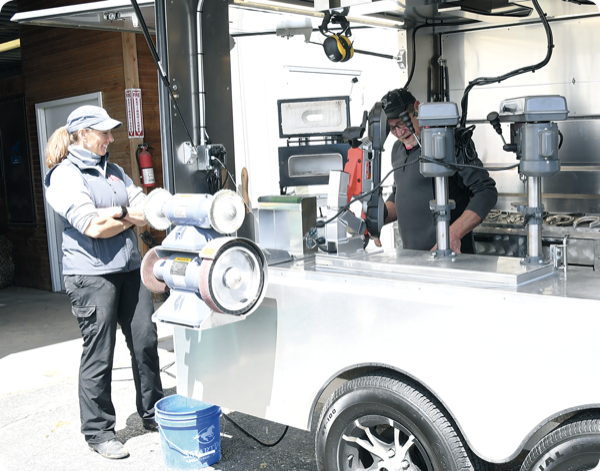
Dr. Lisa Borzynski, left, serves as the primary veterinarian at Jim Ranthum’s barn in Richfield, Wisconsin.
All in all, it’s time well spent and provides me with information I can use to make adjustments. I’m big on monitoring and adjusting, but I see these horses every five weeks, not every day, so the monitoring I can do is minimal. The more input I get from trusted resources, the better I can make my adjustments.

While removing the shoes, I note the flexion and range of motion for each limb and look at the growth pattern for each foot, but I actually spend more time looking at the old shoes. I’m keen on watching horses move, evaluating posture and stance, working with veterinarians for diagnostics and imaging and such, but I really feel that the basic, old-school approach of “reading” the wear patterns in a horse’s old shoes is a critical skill that’s too often overlooked. Assessing shoe wear patterns and watching a horse’s posture and stance will often tell you as much or more than you can learn by watching him move.
With the shoes pulled and set aside, Jim saddles a horse, and I set up my trailer and work area; the timing works out so that we’re finishing up just as Lisa arrives, and we begin an assessment/evaluation of the horse under saddle in the indoor.
When this horse first arrived last year, Lisa did a thorough evaluation, including radiographs, which identified imbalances in the feet. We reviewed those together and came up with a shoeing protocol to get things back on track. Additionally, there were related issue with musculature and movement, which Becky has been addressing regularly.
After watching the horse go, we are all pleased with his progress and determine that additional radiographs and imaging aren’t necessary, so I go to work, trimming and shoeing him. Meanwhile, Becky goes back to do body work on another horse, Lisa begins dental work on another, and Jim gets another tacked up for work.
Late Morning
As I finish up, Jim is working another horse, and we all take a break to evaluate him in the arena before heading to the lounge, where Jim has a great lunch waiting.
Mid-Day
After lunch, I start on Worship, aka “Bodie,” Gretchen Smith’s 3-year-old Quarter Horse gelding. She acquired him about a year ago, and he’s basically a young horse in a big-horse body, which can make for some under-developed stifles.

Realizing this, Jim and Gretchen opted to back down and not push him too hard, and they’ve been working him on a more relaxed and reasonable, but consistent, program and have been working him up and down hills to develop and promote stifle strength. I’ve been working to keep the angle of his hinds a bit on the steep side to do my part, and Becky has been doing massage work regularly, as well.
Mid-Afternoon
I’ve got all the morning’s group effort and consensus catalogued in my head, and things are quieter at this point in the day. We’ve done our group/teamwork, and I can focus on getting the horses shod and ready for their spring show season.
Evening
With all the horses done and the trailer loaded, I’m off to get dinner and then back to the hotel. Tomorrow, I’ll have two more stops and five more horses before heading back to work in Chicago. Becky will be working at both places, and we’ll coordinate again, and Lisa will be just a phone call away.

The wear patterns on old shoes provide a lot of information about how the horse is moving.
But I’ve got even more people on the team for tomorrow’s work. One of tomorrow’s horses has a significantly mismatched pair of feet, and I consulted with a great farrier and friend, Danny Terry, about him while we were recently working together in Texas. I’ll be making some adjustments to the weight of his shoes, using Danny’s advice. And I’ll be tweaking his shoe position, using advice gleaned from another mentor, Tim Fleck, a veterinarian and equine chiropractor from Indiana.
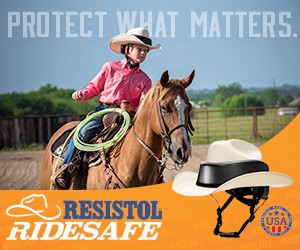
Another of the horses has a mild interference problem, and I’ll be on the phone tonight with a great farrier and friend, Pat Broadus, to review some options about “dialing” him in to minimize the problem.
I’m confident in my abilities. I can do a great job shoeing horses alone, but I’ve reached a point where I’m humble enough to know that it’s best for the horse when I use all my resources, and my best resources are the talented people I have the opportunity to work with.
A lifelong horseman and practicing farrier since 1972, Danvers Child is a certified journeyman farrier who specializes in shoeing sport and performance horses. He is an approved examiner for the American Farriers Association, serves as an official farrier at the Land Rover Kentucky Three-Day Event, and in 2018 was inducted into the International Horseshoeing Hall of Fame.
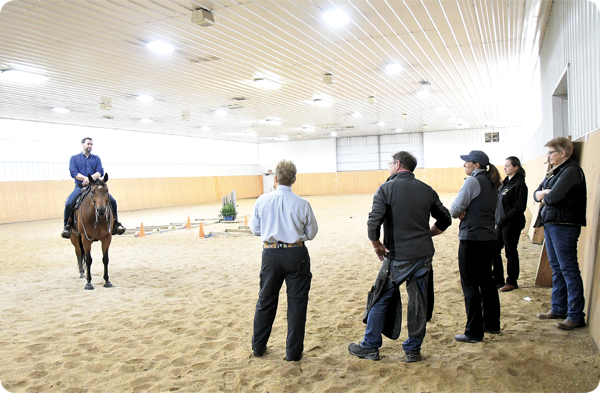
With Jim on board, the team begins an assessment of this horse under saddle.
